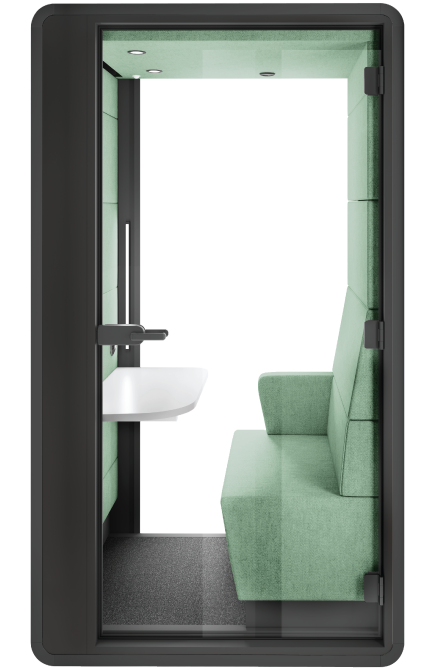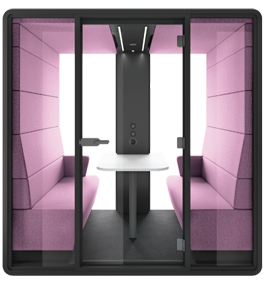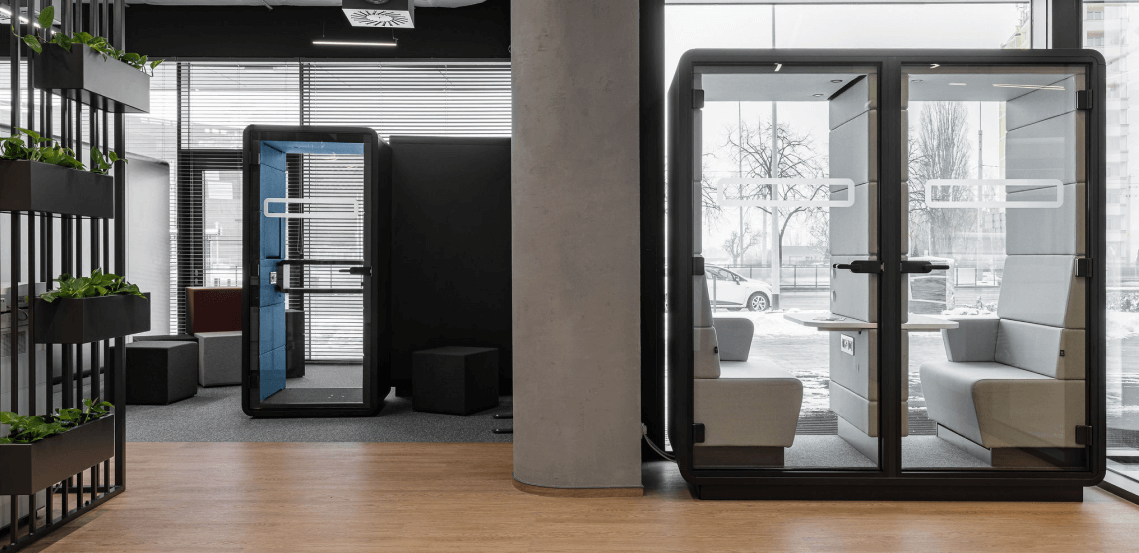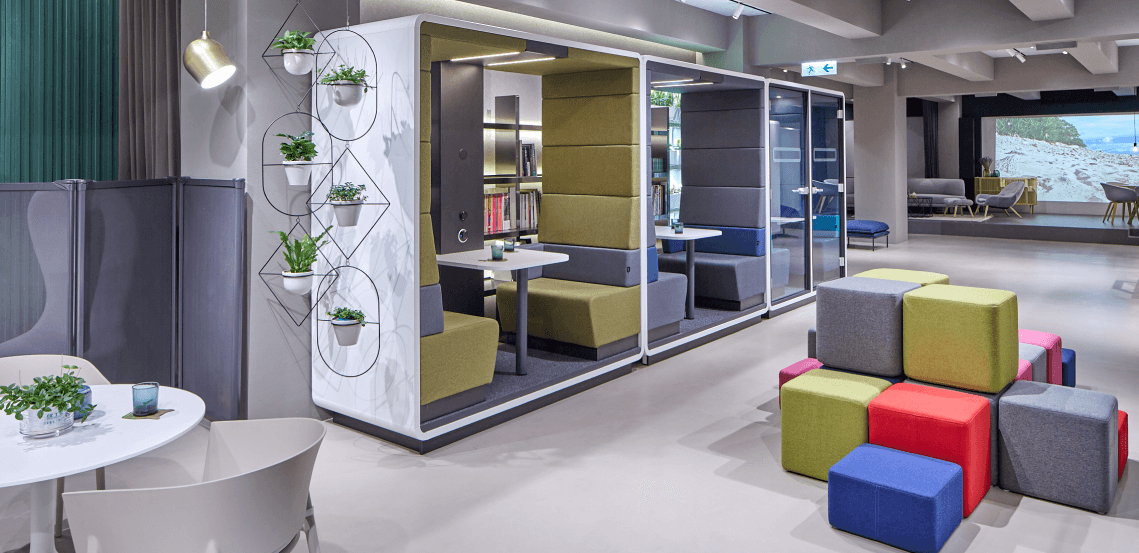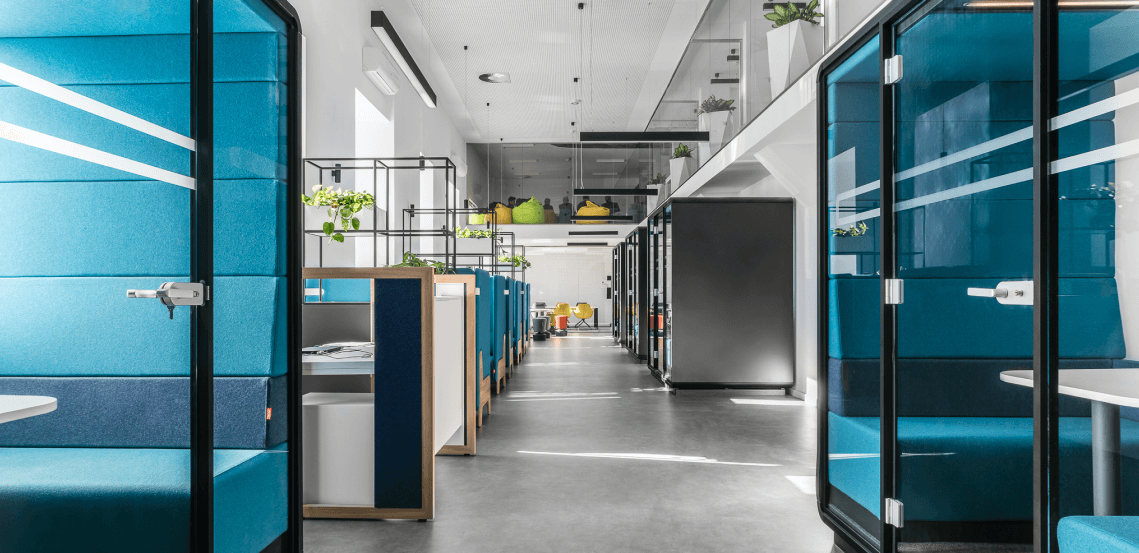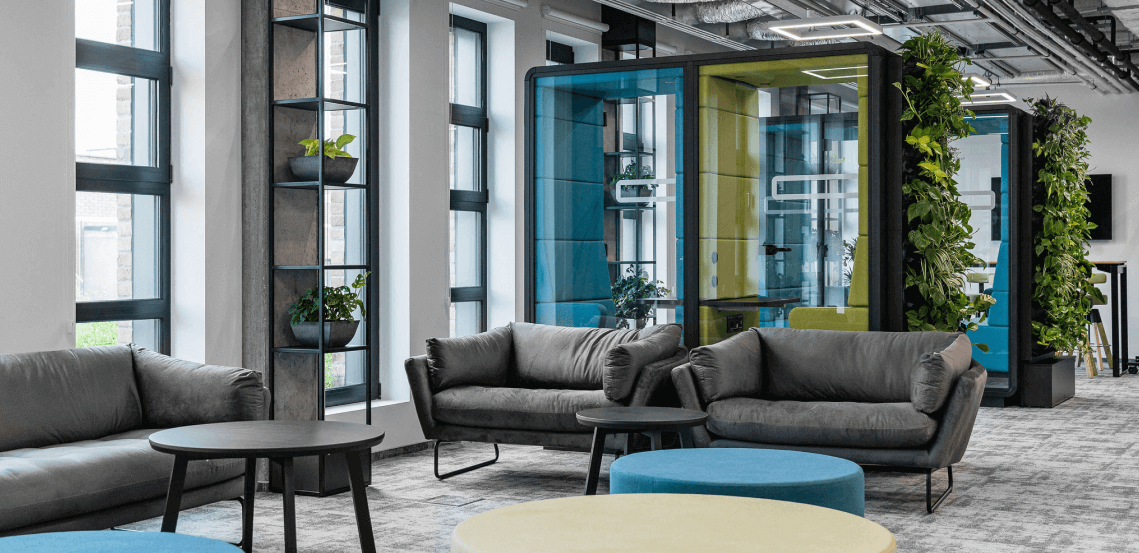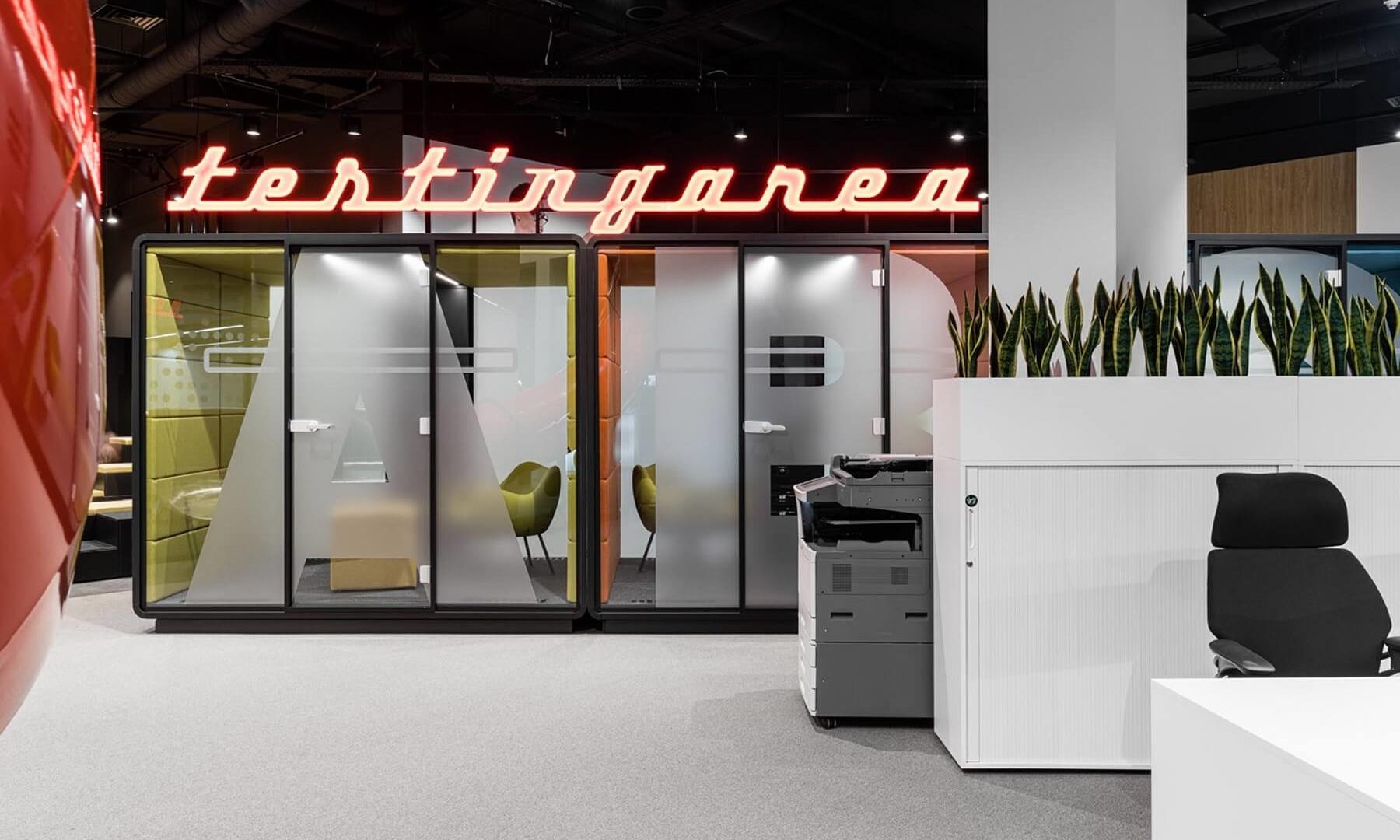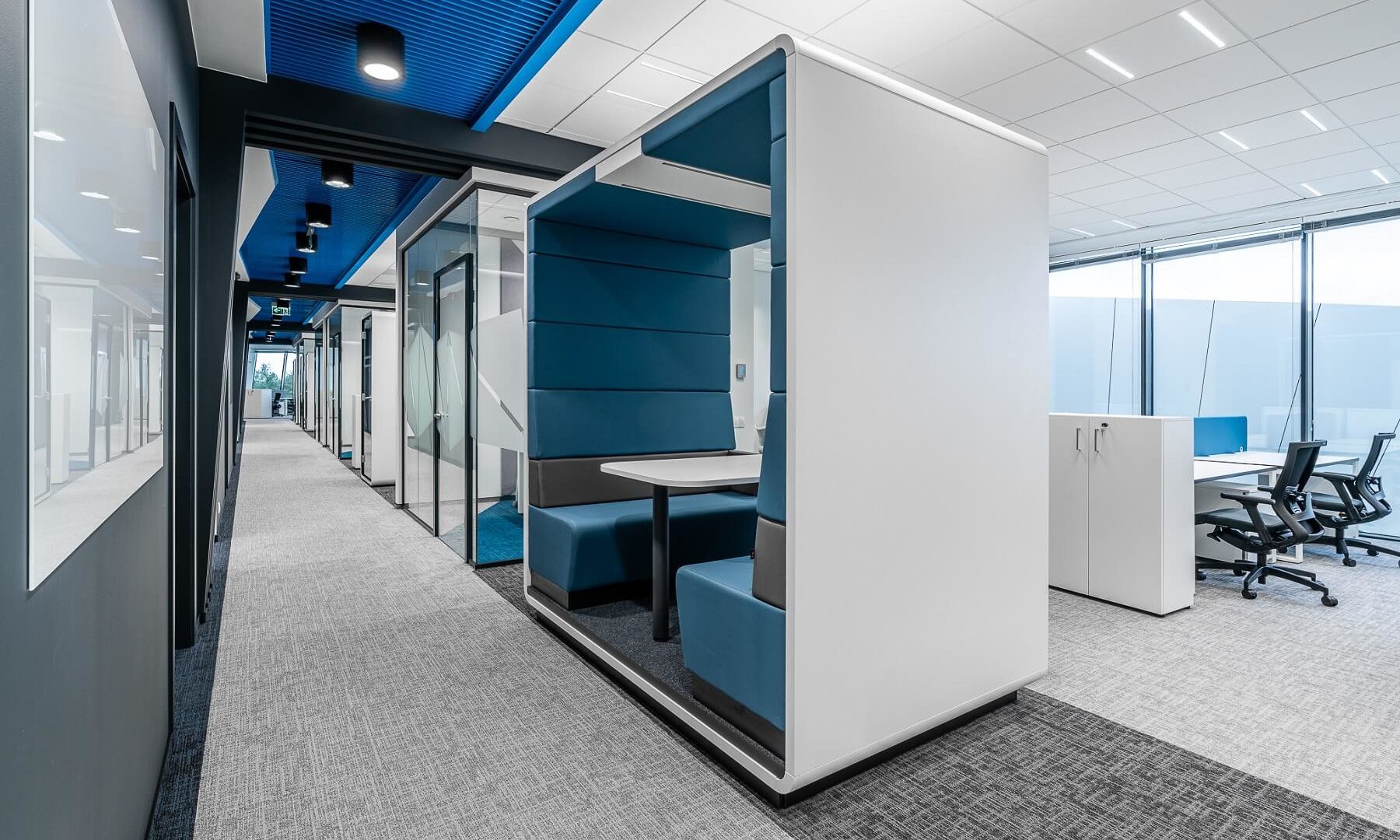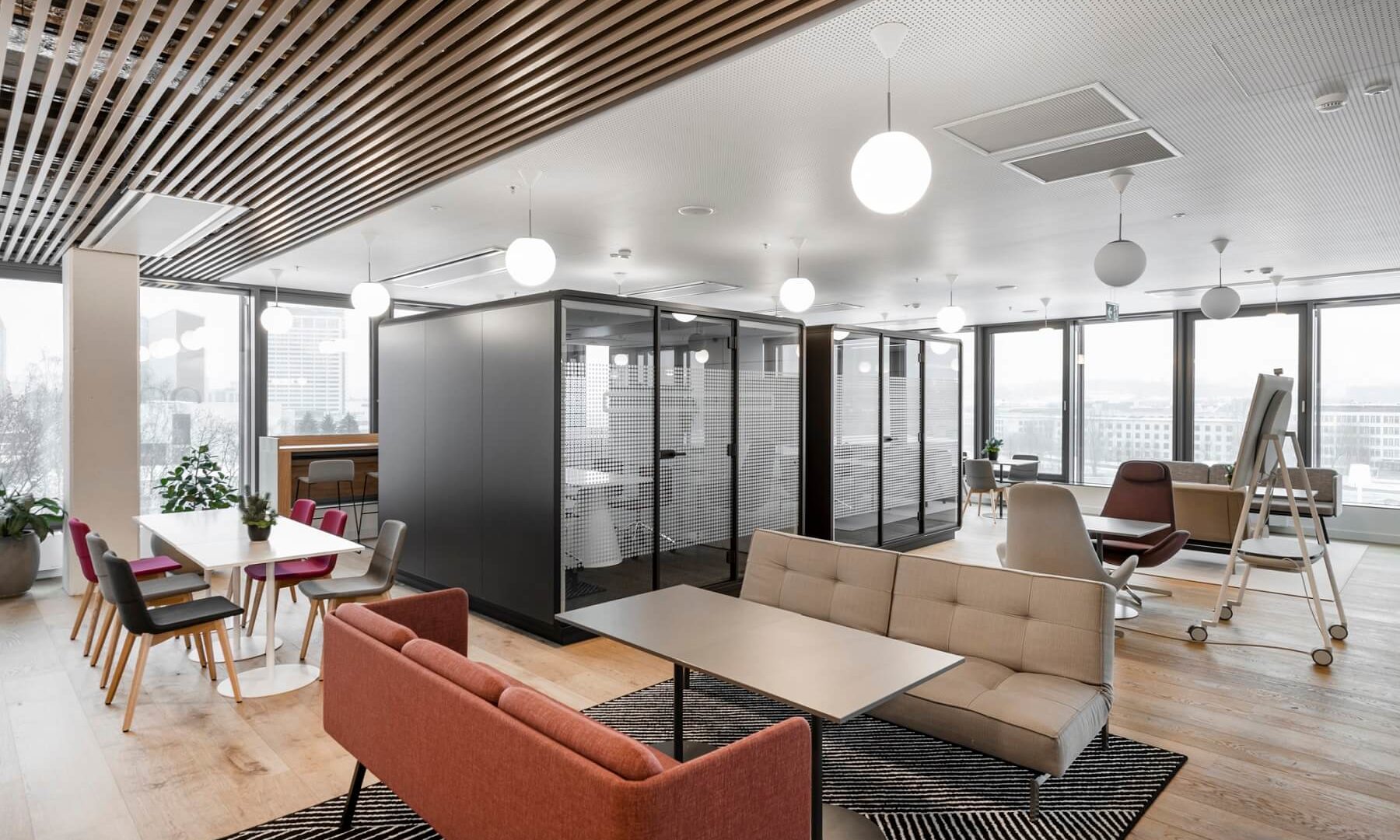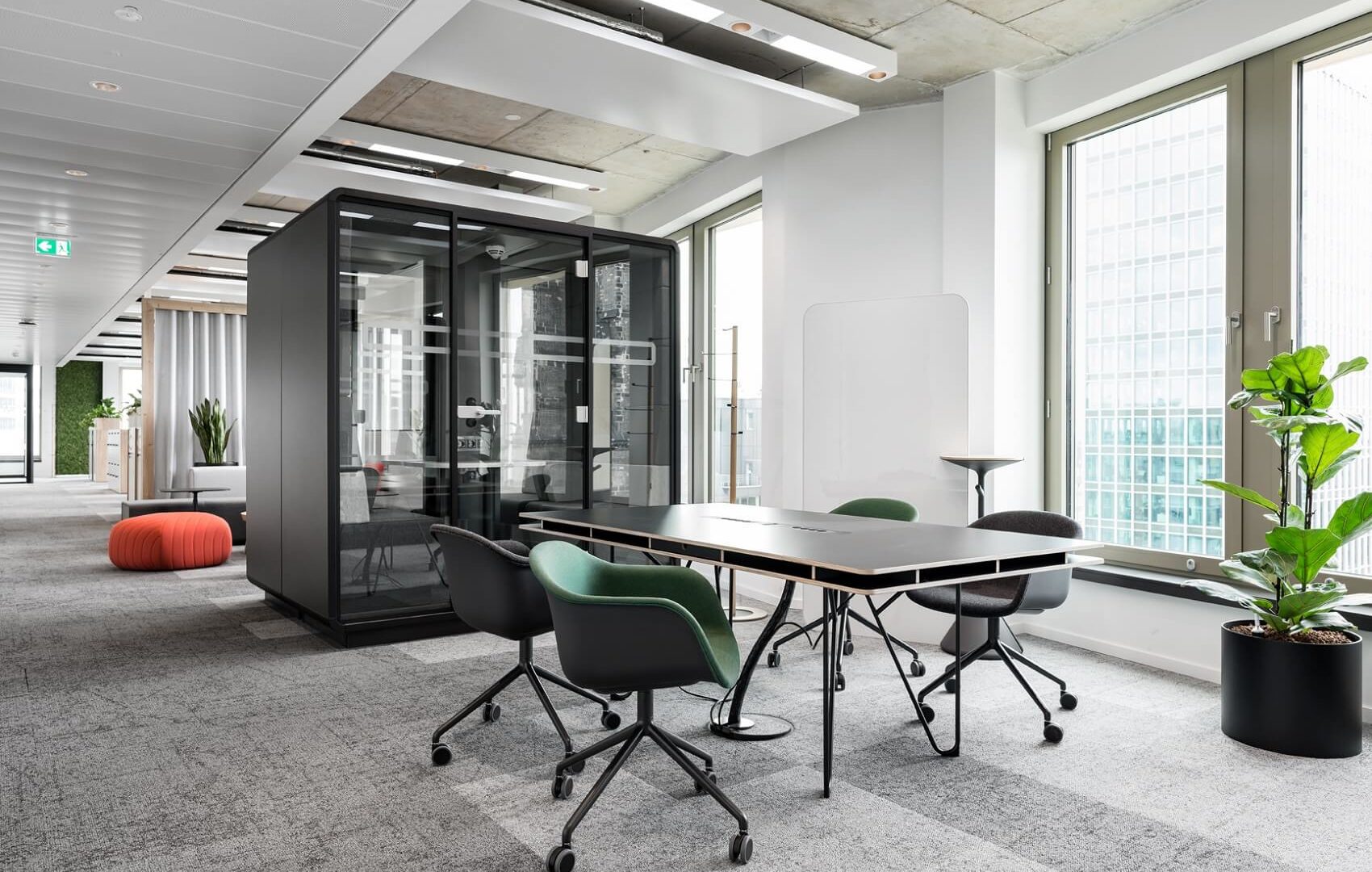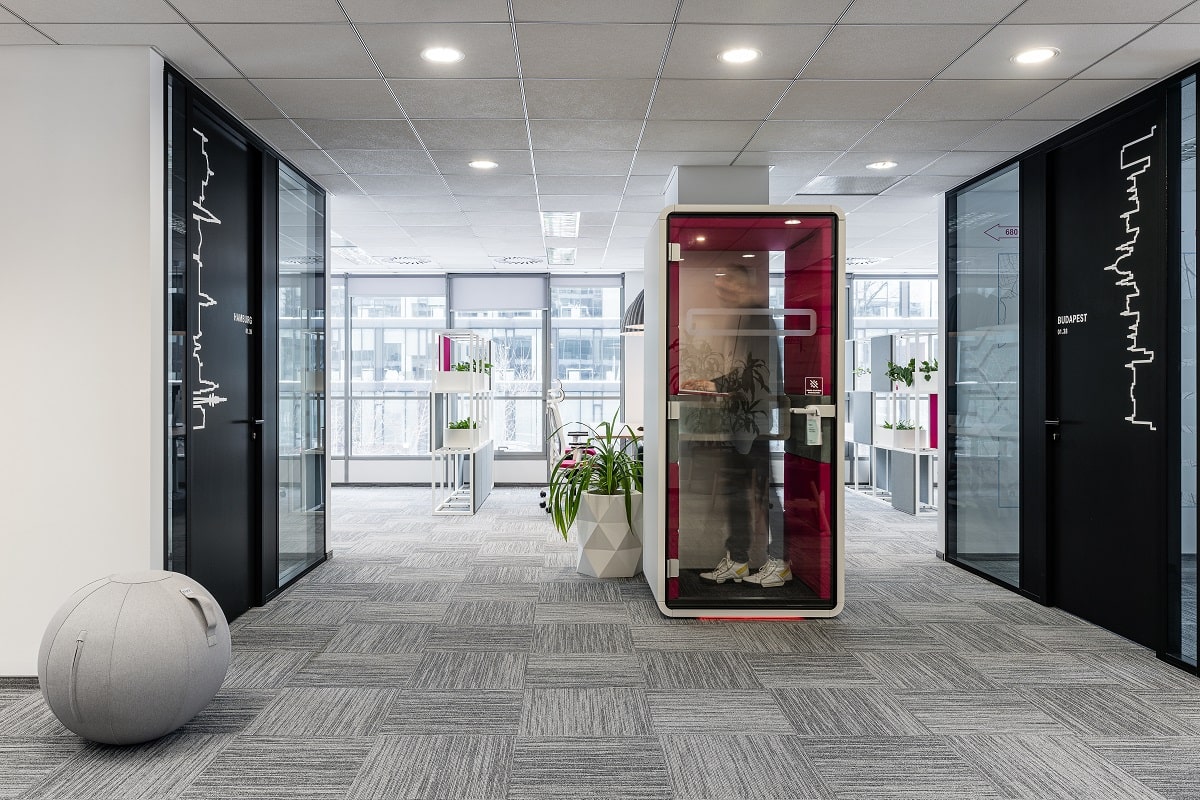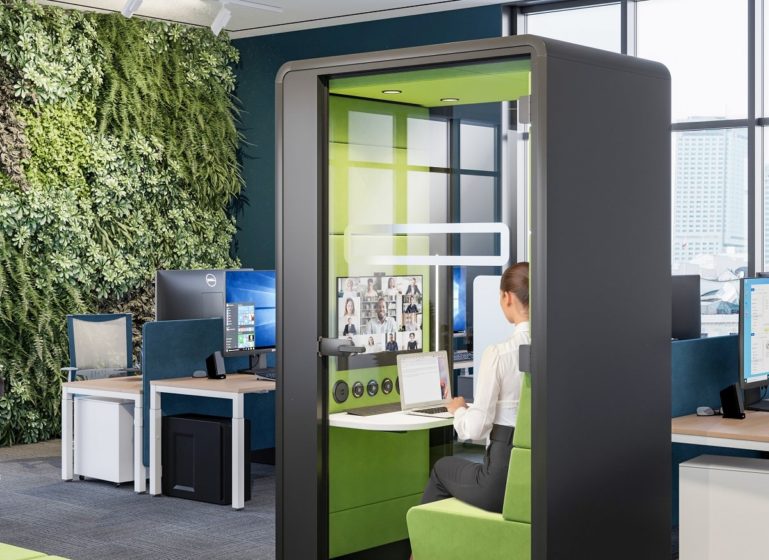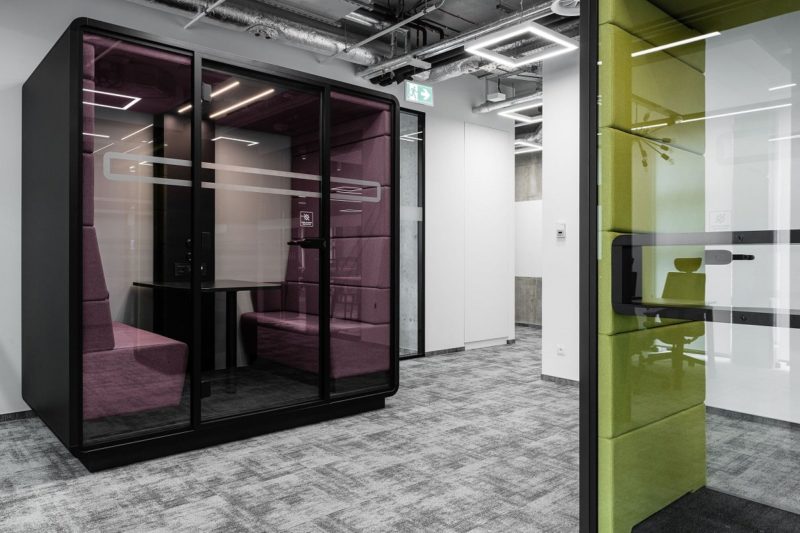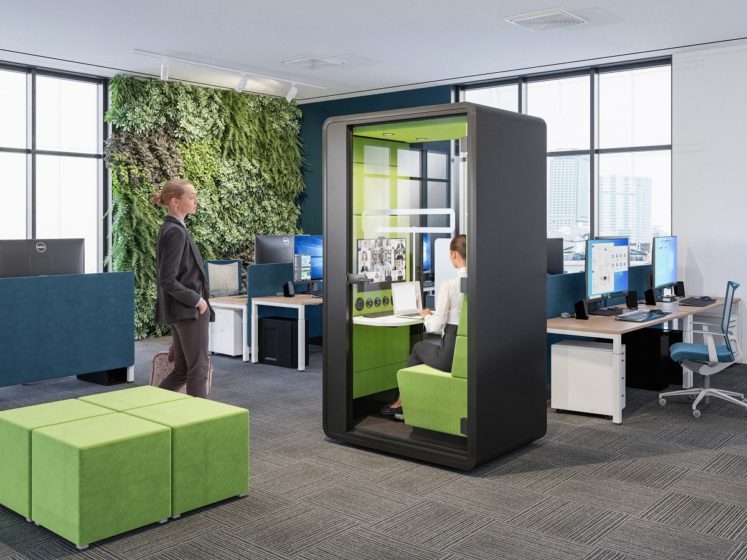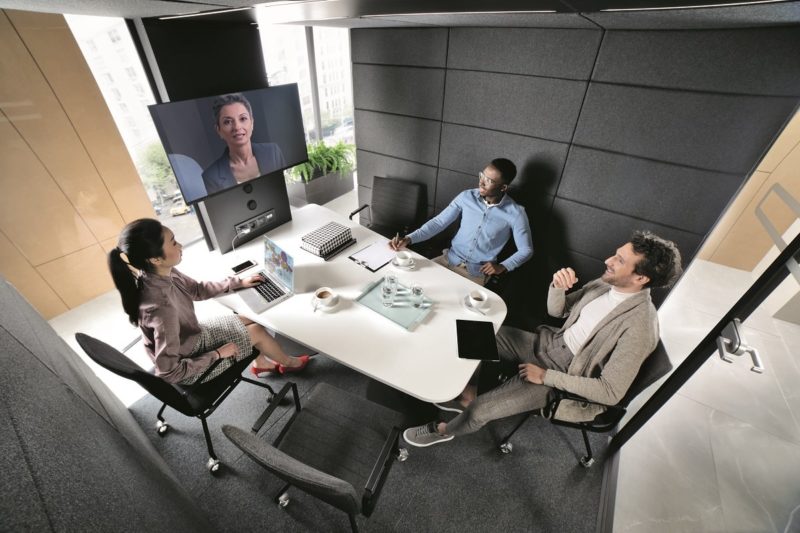An introvert’s getaway from office bustle: acoustic pods
- Posted on: 4 April 2024
- By: Hushoffice Team
Introverts operate behind the scenes, their introspective nature quietly driving an organization forward. How can the office best support this thoughtful, conscientious cohort? Privacy is key.
Introverts in the workplace – tl;dr
It is estimated that introverts make up about half of the workforce. This group is sensory-avoidant, preferring hushed work settings. Similarly, they are easily overcome by stimuli and perform (and feel) best in minimal, low-activity environments. Unsurprisingly, they also flourish on alone time, making private, personal workspaces in the office a “must” for them.
A recent study found that open benching, in particular, boosts focus and happiness for employees high in extraversion while deterring these functions in introverts. It is one of the first pieces of research to conclusively show the variance in employee preferences per personality type. The big call-to-action for employers is that office zones should be adapted not only to specific activities but distinct employee likings regarding each activity.
Acoustic pods and booths are a worthy solution for introverts. They are sound-insulated, affording speech privacy in hand with a quiet atmosphere. They are pleasantly private, giving a sense of personal space. And their user-focused design offers a reassuring dose of autonomy to those who need a feeling of control.
Different types of employees need different things from the office.
Extraversion manifests in outward traits: social, energetic, talkative. Introversion is revealed in more reflective, reserved behavior. The two make either end of a spectrum on which everyone resides at a given point. Both types demand different accommodations within the office.
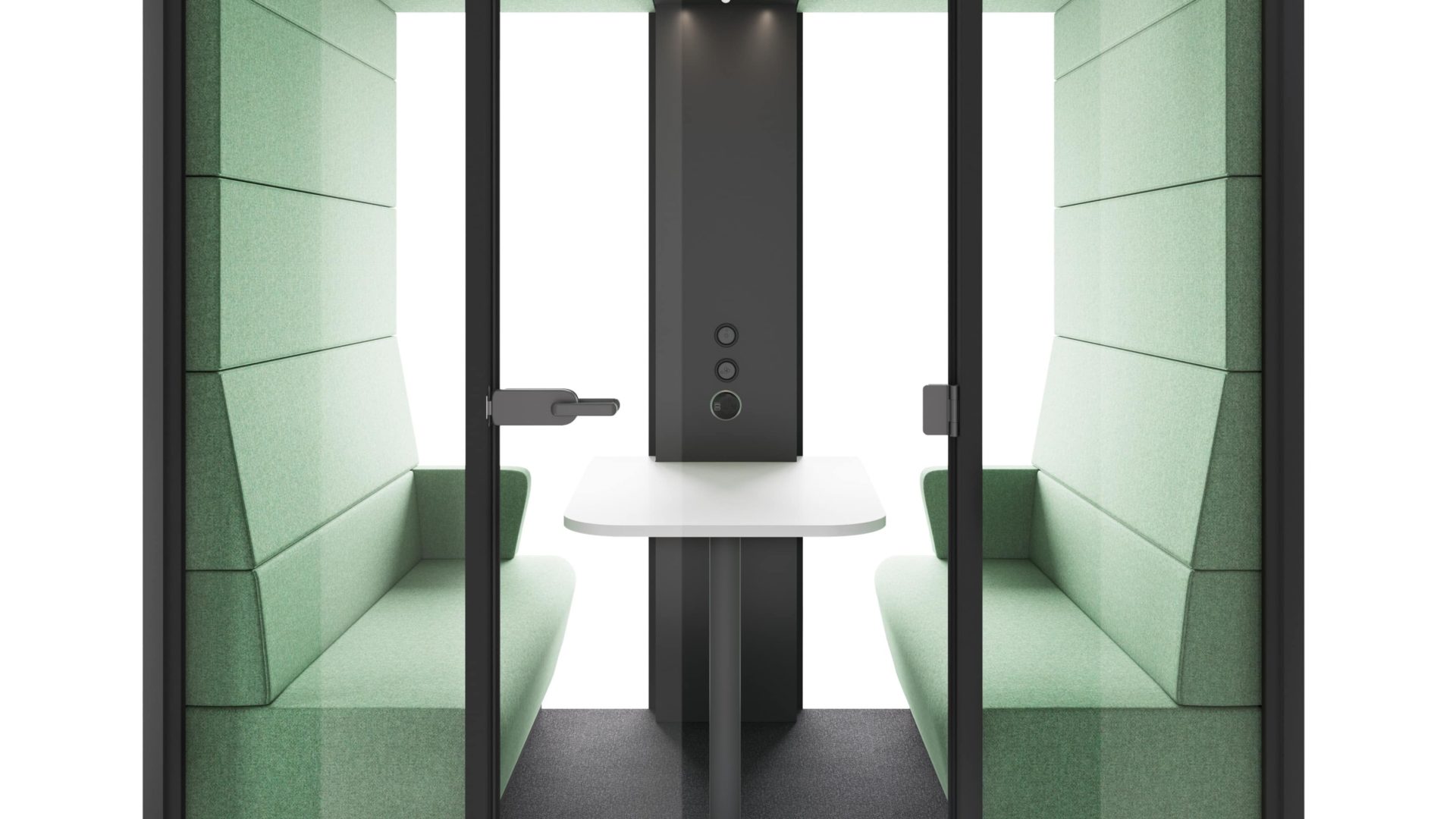
Introverts have distinct approaches, preferences, and work patterns.
They love solitary tasks — researching, writing — and are mostly independent workers. They get overwhelmed by too much stimulation, favoring seclusive workspaces. Introverts also share a characteristic need for “me time.” Without intermittent isolation, they get drained, and work suffers.
The work environment affects every personality type in a special way.
An introvert’s energy expands in reflection and dwindles in interaction. So they have a greater need for remote, renewing spaces in the office. Spaces like private pods or booths are well-suited, allowing for separation from others — inside, the introvert can charge their battery when it gets low.
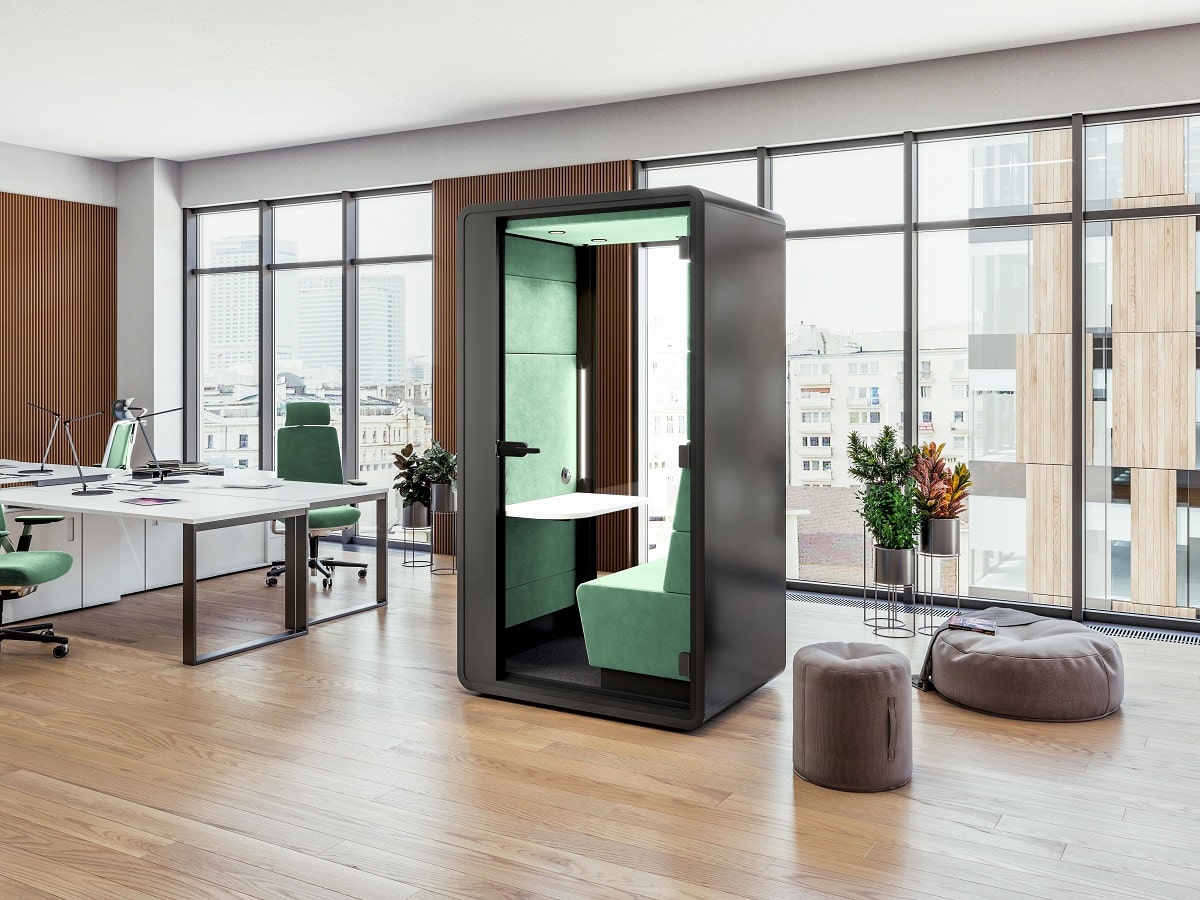
Introverts need devoted spaces in the office to thrive.
While extroverts tend to complete tasks quickly and often multi-task, introverts take their time and basically swear by singular focus, being the more deliberate, careful worker. Going at their own pace in their own way is just what allows them to elicit their special genius. However, private spaces are required – spaces where the introvert can focus intently without concern that peers or supervisors are judging their more methodical, one-task-at-a-time, seemingly slower, but often most thorough approach
– says Mateusz Barczyk, Senior Brand Manager, Hushoffice.
A 2023 study found that benching improves focus and happiness for employees high in extraversion. On the other hand, it deters both functions in the highly introverted. In this case in particular, the office clearly must supply a variety of workspaces to accommodate every typical disposition.
Introverts process stimuli far differently than how extroverts do.
“Hermits” take in and respond to sensory input in a multitude of ways distinct from the “social butterfly” as detailed below. When you consider these scientific bases of differences on an individual level, the implications for workplace design are quickly apparent!
Neurobiology. Introverts and extroverts differ in their brain structure and function. For example, introverts generally have higher levels of activity in regions of the brain that handle internal processing, such as the prefrontal cortex. The prefrontal cortex oversees decisions and self-reflection. Extroverts, on the other hand, show higher activity in areas to do with external processing and reward. The amygdala and nucleus accumbens, for instance, which aids in processing social and sensory information. This validates the introvert’s need for personal space and quiet time in the office.
Neurotransmitter Levels. Variances in neurotransmitter levels, such as dopamine and acetylcholine, also play a role in how different personality types process stimuli differently. Introverts have a higher sensitivity to dopamine, which is involved in reward and pleasure. This leads them to seek less stimulation. Conversely, extroverts, less sensitive to dopamine, seek more stimulation. This explains the need for a strategic blend of social and solitary spaces in the workplace.
Arousal Baselines. Introverts tend to have a higher baseline level of arousal than extroverts. So they get taxed by input more quickly, leading them to prefer calmer environments. Extroverts, on the other hand, have a lower baseline level of arousal and may seek out more stimulating environments to reach their optimal level of arousal. Here too, the need for variety is clear.
Information Processing. Introverts often like to process information deeply before responding to it. They may take longer to answer in social situations. Extroverts, on the other hand, tend to process information externally, using social interaction to shape their thoughts and decisions. A mix of diverse meeting spaces is needed to cater to both inclinations.
Attentional Focus. Introverts typically have a more focused attentional style. They prefer to concentrate on one task at a time. Extroverts, on the other hand, have a broader attentional focus and may enjoy multitasking, engaging with multiple stimuli simultaneously. This explains the extrovert’s affinity for an open benching setup.

Introverts face serious (but solvable) challenges in open working spaces.
Introverts are highly perceptive to their environments. They are like sponges, soaking up all the stimuli around them. An extrovert more naturally keeps afloat an office’s commotion unbothered by it, as the lively noise and happenings simply become water they are swimming in. For an introvert, though, this commotion can figuratively drown them, overburdening them with too large a cognitive load for their make-up. This is why introversion inclines an employee toward deeply needing time to introspect after a task or meeting, for instance. In introspection, one can not only collect their thoughts but recover their bandwidth, clearing out their mind entirely to start the next task anew. A minimally designed and adorned space such as a Hushoffice booth is an ideal location for this rest, where stimuli is totally limited, allowing for a real sensory reset
– explains Mateusz Barczyk, Senior Brand Manager, Hushoffice.
Introverts need occasional isolation in a peaceful, uncluttered space to do well. More so than extroverts, they need a sense of control to be at ease in their environment, able to focus completely on the task. A nexus of privacy, quietude, and autonomy in the office’s design is paramount.
For “shy” employees on an open floor, acoustic cubicles are a salvation.
A pod is pleasant and sparse – the low-key environment sensory-overloaded employees need to find balance. Moreover, pods such as hushHybrid offer the dire element of user-adjustability through settable lights and ventilation, giving your control-seeking introverts much-wanted autonomy.
Quietude and calm cater to the recluse employee’s nature.
The reality is, for inward-facing colleagues, periodic “reboots” in a peaceful space like a booth shouldn’t be considered a nice-to-have. It is best considered a necessity – a freedom that lets stimuli-sensitive employees think, feel, and perform well, task by task.
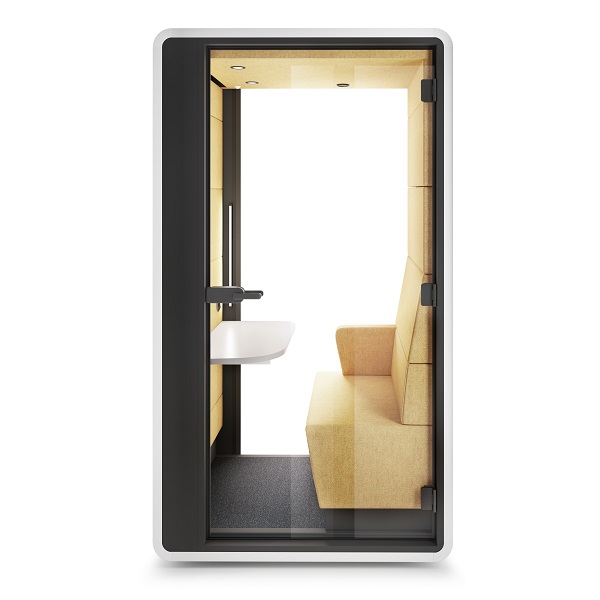
Low-stimulus work environments work magic for employees of all types.
No one is 100% extroverted or introverted all of the time. And every task has different requirements. While your best sales representative may love the team atmosphere of an open bench, they also need the security that a phone booth like hushHybrid gives to vital client calls.
Hushed and seclusive, pods and booths ultimately help realize inclusive office design.
Regardless of personality types, everyone needs privacy to get work done. Private work booths are a brilliant spatial solution because they afford this privacy without compromising the office floor’s liveliness. They allow you to fine-tune your workplace’s balance of social and seclusive spaces.
Psychological comfort makes acoustic cabins true oases of peace.
Introverts are measured, slow to voice their thoughts. Bringing them out of their shell is about comfort – making them feel physically and emotionally safe to share. Quiet, cozy, sound-insulated, and private, meeting cabins like hushMeet master the physical component of comfort.
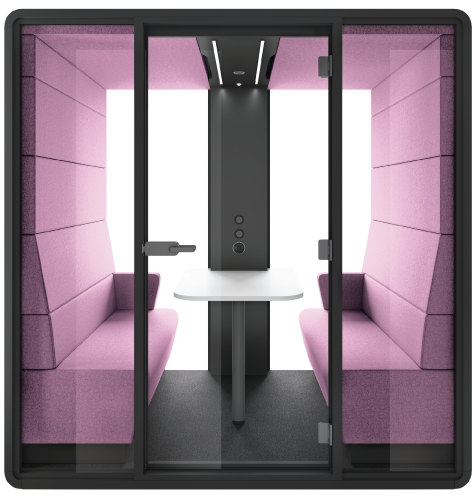
Acoustic booths help employees manage stress by giving them breaks from the bustle.
Breaks boost well-being by reducing fatigue. Their periodic mental recovery from work keeps burnout at bay; prioritizing them can make you more resilient and happier. Furnished with lounge chairs, hushAccess.L is an apt break space – quiet and cozy, with dimmable lights.
Bridge the needs of introverts and extroverts alike with Hushoffice booths.
Just as introverts need to break from others in a safe haven, extroverts need to connect with others in a social hub. Hushoffice booths are for both. They are the quiet space for solitude in one moment, and the sound-insulated space for group discussion in the next.
What do we know for certain about effective office design? Variety is its hallmark. Only when we give employees a good variety of settings to choose from will they be able to work most intuitively in the workplace, enjoying ease as they flow from breakout area to private pod, satisfying the day’s agenda. And when we talk variety, we are talking variety on the sensory plane. One area of the office, casual bar-height tables, is brightly lit by steady southern exposure while another is sheltered from daylight almost entirely, perhaps a nook under a stairwell with lounge furniture and a simple task light. One area of the office, the work cafe, brims with socialization while another, the 4-person team meeting booth, hushMeet, stays uninterruptibly calm thanks to its fine acoustic design and architectural enclosure. Sense by sense, every space in the office can be diversified to offer the richest array of choices to employees. Perfectly private and fit for confidential or deeply focused work, pods and booths are part of this necessary mix
– says Mateusz Barczyk, Senior Brand Manager, Hushoffice.
Introverts in the workplace – tl;dr
It is estimated that introverts make up about half of the workforce. This group is sensory-avoidant, preferring hushed work settings. Similarly, they are easily overcome by stimuli and perform (and feel) best in minimal, low-activity environments. Unsurprisingly, they also flourish on alone time, making private, personal workspaces in the office a “must” for them.
A recent study found that open benching, in particular, boosts focus and happiness for employees high in extraversion while deterring these functions in introverts. It is one of the first pieces of research to conclusively show the variance in employee preferences per personality type. The big call-to-action for employers is that office zones should be adapted not only to specific activities but distinct employee likings regarding each activity.
Acoustic pods and booths are a worthy solution for introverts. They are sound-insulated, affording speech privacy in hand with a quiet atmosphere. They are pleasantly private, giving a sense of personal space. And their user-focused design offers a reassuring dose of autonomy to those who need a feeling of control.
Hushoffice Frequently Asked Questions
What does introversion matter in the office’s design?
Generally, considering personality types goes a long way in making your office more inclusive and supportive of everyone. Introverts highly value privacy and personal space, for instance. So the office should include options for distraction-free, autonomous working. Introverts also tend to be more sensitive to sound, making acoustic insulation a key consideration. They can be more prone to sensory overload, making tech-free relaxation spaces a worthwhile consideration too.
How can I make my office more friendly to introverts?
Tech-free spaces, meeting-free days, and designated quiet zones will all make your workplace more introvert-friendly.
What do introverts need in the office?
The one thing any introvert will request in an open office is more privacy. This request can be accommodated by installing divider panels, acoustic baffles, or desktop privacy screens. You may also think of investing in a devoted work booth like hushHybrid.







